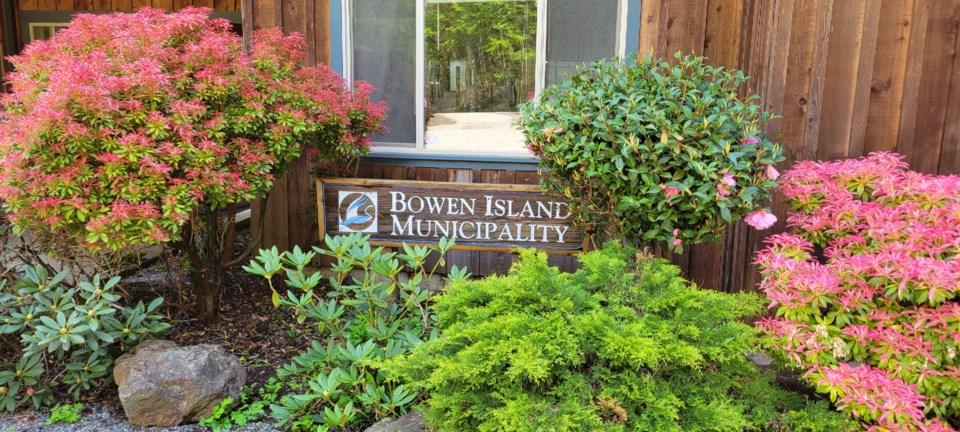Discussion about next steps to tackle Westside water supply issues will head to a Committee of the Whole meeting this Wednesday.
Council dedicated a substantial portion of their Nov. 28 meeting to the topic as they look for answers to several problems that have come to the forefront. The most immediate of these are the lack of water in the Bluewater Park (BWP) Local Service Area (LSA), largely due to old and failing infrastructure in their zone.
This has led to increased reliance on the wells of the neighbouring King Edward Bay (KEB) LSA for water supply over the past decade, paid for by BWP residents. But with KEB continuing to expand – currently home to 42 properties with dozens more on the way – this arrangement is no longer sustainable, both because of this new development and stress being placed on the KEB aquifer. BWP peak daily use in the summer can hit 165,000 L/day, while their well field can hold just 14,000 L/day.
The municipality says a solution may be available in the nearby Bowen Bay (BB) LSA though. Their trio of wells can hold around 114,000 L/day, and hydrologists say with upgrades this number could be boosted to 221,000. This would cover the average BWP daily use of 66,000 L, and nearly cover the LSA’s peak daily summer use, according to chief financial officer Kristen Watson.
Under this scenario, the BB water headed for BWP would be stored in the massive KEB reservoir. The BWP well would also see its capacity increased, and doubled to hold 28,000 L/day. The old, broken and leaky BWP water mains would begin replacement as well, starting with an approximate 800 metre stretch along Windjammer, Captains Way, and Spyglass Roads.
Costs for the projects depend on how many of them are taken on at once. Upgrading the BB wells and connecting them to the KEB reservoir is estimated at $715,000, replacing the worst water mains in the 810 metre stretch of BWP at $980,000, and upgrading the BWP well at $75,000, for a total of $1.77 million.
Further water main replacements of equipment that is viewed as questionable or near the end of their life would cost another $1.38 million, for a total of around $3.1 million. This work, classified as Phase 2 of the project, is not seen as immediate though.
Financing the project would be born almost entirely by the residents of the BWP LSA, aside from around $30,000 contributed by BB. Since the BWP LSA has $80,000 in reserves, the remainder would have to be borrowed. Watson says the preferable option for doing this is through a loan authorization bylaw (LAB).
Residents need to be on board with borrowing plan
Loan authorization bylaws are funded and approved by the provincial government. To make sure they receive approval, the province looks for proof that the affected community is in support of the plan. Often this is done through a referendum, which in this case would take place in the BWP neighbourhood.
It’s the results of this potential referendum that are unknown, and why Watson suggested it may be more palatable right now to put borrowing $1.77 million for well and immediate water main work to a vote, rather than the $3.1 million which includes future water main work. If the lower amount is approved by voters, a 30 year debt repayment would be undertaken by BWP residents, collected through a new annual parcel tax of around $725 a year. If the $3.1 million were approved, this yearly charge would be $1,323.
Most councillors expressed their desire to pursue the higher number, though they were cautious about the outcome of a failed referendum. Watson explained that a no vote from BWP residents would kill the LAB option, and could result in a straight parcel tax on neighbourhood properties instead. This would need to be repaid in one year though, instead of 30, meaning it would be a much higher amount per household.
Coun. Tim Wake suggested council hold a Committee of the Whole (COW) meeting with board chairs of all three of the impacted Local Advisory Committees (LAC) to see if agreement can be reached on the plan going forward. All three LAC’s have expressed several concerns with different aspects of the proposed plan, leaving it up in the air if the trio can all agree on a path ahead.
“We’re striving to reach consensus here before making a decision. If we can’t reach that consensus, and given the time constraints, then we are going to make a decision. But at least we’ll make a decision after we’ve really tried everything to reach a consensus,” said Wake.
Council agreed and unanimously voted to hold a COW on the topic prior to the next council meeting. The meeting will take place virtually on Wednesday, Dec. 7, and is open to the public.
Following this discussion, a decision is expected by council at their Dec. 12 meeting. Watson and engineering director Patrick Graham both stressed the importance of starting work as soon as possible to ensure there’s enough water for all area water needs during the upcoming summer.



